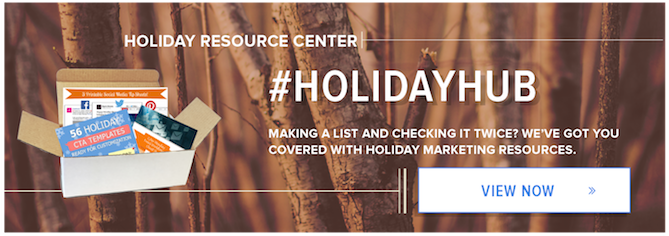
When Thanksgiving rolls around, there are a few questions that we don't exactly look forward to hearing. "When are you getting married?" "When am I getting grandchildren?" "Have you been moisturizing?"
And yet, none of those oh-so-polite questions even come close to the complexity of explaining what, as an inbound marketer, you actually do for a living.
It's not that inbound marketing requires a long, drawn-out answer -- after all, it can be described in 140 characters. But explaining it requires some fundamental knowledge of how technology, marketing, and the internet work. You know, the things that your grandparents might not fully grasp in one fell swoop. 
Good news -- all you really need are a few storytelling strategies. We found five ways you can explain inbound marketing to your family. And sure, some of these are useful, and some are just sarcastic. But hey, family is family, right? They'll still love you.
5 Ways to Explain Inbound Marketing to Your Family This Thanksgiving
1) The Food Analogy
.gif?t=1480517036640&width=600&name=giphy%20(27).gif)
Source: Giphy
In the U.S., Thanksgiving typically consists a few staples -- turkey, mashed potatoes, and pumpkin pie, to name a few. And while it might sound strange, you can use that knowledge to your advantage by using food preparation as an analogy for different aspects of inbound marketing.
To explain lead nurturing, you can use the pumpkin pie. Sending unnurtured leads to sales is like giving an unbaked pumpkin pie to your guests. I suppose the pumpkin pie could be eaten raw, but ... gross. Instead, you should bake the pumpkin pie -- that ultimately makes it richer and more palatable.
Nurturing leads before sales contacts them works in the same way. It warms them up to your brand, and starts to qualify them with better information on what they might need. "Warm" leads, like the cooked pie, are already familiar with your business, and will close at a much higher rate than those that are "cold."
Use whatever analogy you like to describe inbound marketing -- it clarifies confusing issues by comparing them to something that, quite literally, is right in front of everyone.
2) The Real-Life Scenario
.gif?t=1480517036640&width=600&name=giphy%20(30).gif)
Source: Giphy
When I'm asked about inbound marketing, I like to use real-like examples of interruptions that they'll likely recognize, and explain how the inbound methodology pertains to it. It usually sounds something like this:
Amanda: Hey, Dad. You know how much you hate telemarketers calling you in the middle of dinner?
Dad: Yes. Hate it. Why? Is that what you do for work?
Amanda: No, actually. Inbound marketing is the exact opposite. That's interruptive marketing. They literally interrupt you. So annoying, right?
Dad: Yes. I'm surprised they're not interrupting us right now.
Amanda: Well, in my job, I create marketing that doesn't interrupt what people are doing. In fact, I create content that people are actively looking for, because it's helpful, entertaining, or informative. Instead of a telemarketer was calling to sell you spoons, I create stuff that someone looking for information about spoons might be searching for on the internet.
Dad: So I would find you, instead of you calling to bother me?
Amanda: Yes! I provide you with actual value from my company, which makes you more interested in what my company sells.
The keys here: 1) Identify which interruptive media your dinner guests are familiar with, and 2) play into their pain points when dealing with that media. Inbound marketing is much more logical when you explain it that way -- even if your family doesn't work marketing or communications.
3) The Theatrics
.gif?t=1480517036640&width=600&name=giphy%20(29).gif)
Source: Giphy
If you're feeling especially creative -- and you have at least one Thanksgiving guest who is willing to participate -- you could set up a roleplay. There are lots of scenarios you can act out, but a classic one would be the telemarketer/dinner guest scenario.
Let's use the telemarketing example above -- and be warned, it might require a few minutes of planning before everyone sits down to dinner. You play the role of the telemarketer, and your dinner guest can be, well, the dinner guest. First, put his or her phone's ringer on the highest volume possible. Then, as soon as someone asks you about your job, excuse yourself and duck out to a quiet area with your own phone. Then, call the dinner guest, have him or her answer the call on speaker, while you pretend to be a telemarketer selling something completely unnecessary at that point -- Halloween costumes.
Be sure your dinner guest uses key phrases like "You're interrupting me in the middle of Thanksgiving dinner with this irrelevant call," or, "Don't you think it's a little late to be calling me about Halloween?" or, if you really want to go nuts, "I wish you had sent me a targeted, personalized email in October about those costumes -- I would have bought them."
Then, have them slam down the phone on the table. You can return from your "bathroom break" and say, "See? Telemarketing, or any type of interruptive marketing like that, is profoundly annoying. In my job, I create marketing that helps people -- not annoy them."
End scene.
Depending on the talent of your guest, you might be able to improv the entire thing. Otherwise, you might want to type a script out and email it to the guest beforehand. And if you really want to go overboard, stay in character the entire dinner. The sight of you dressed up as a skeezy telemarketer with a headset will be just too intense to forget -- that is, at least, until your mother requests, "Please remove your headset from the table."
4) The Puzzle Pieces
.gif?t=1480517036640&width=600&name=tumblr_inline_mzo5ycqJzi1qiqzxn%20(1).gif)
Source: Webnode
This technique boils down to an age-old philosophical question -- is the whole greater than the sum of its parts? Aristotle thought so, but when you're describing inbound marketing to an unfamiliar audience, it's probably okay to explain each tool that goes into it.
Try isolating inbound marketing into the different pieces that pull it off -- things like blogging, email marketing, social media, closed-loop analytics, and call-to-action buttons. The folks who haven't worked in marketing might not know what these are, either. In that case, try using the analogy technique we opened with to explain them. In fact, you can even act out something like social media, by taking a picture of a decadent cranberry relish and showing how you would share it on Instagram in real time.
5) The "I Write Articles on the Internet"

Source: imoviequotes
If the previous four have all failed, you can always say, "I write articles on the internet for a living." I mean, it's somewhat accurate -- you drive real business results with inbound marketing, and you don't just spew out nonsense blogs about your feelings to get paid -- but it can get your family off your back, especially if you're not sure they'd be interested in hearing the whole shebang. If you choose this path, be prepared to hear how easy it is to blog, and how many of your family members wish they could get paid to do it.
Then, try to switch the subject quickly to something everyone can relate to. "Hey, Uncle Eddie, I'd love to get your amazing stuffing recipe." Trust us -- it works every time.
We're Grateful for You
Good luck out there. And remember: There are so many people who want to know what you do -- which, admittedly is why we love writing about it every day.
We always give thanks for you, our amazing readers. And to express our gratitude, we put together what we hope is a hilarious video of what our families think we do. Happy Thanksgiving!
Editor's Note: This post was originally published in November 2013 and has been updated and for freshness, accuracy, and comprehensiveness.
What other strategies do you use to explain inbound marketing to folks who've never heard of it? Let us know in the comments.
from HubSpot Marketing Blog https://blog.hubspot.com/marketing/explain-inbound-marketing-ht

No comments:
Post a Comment